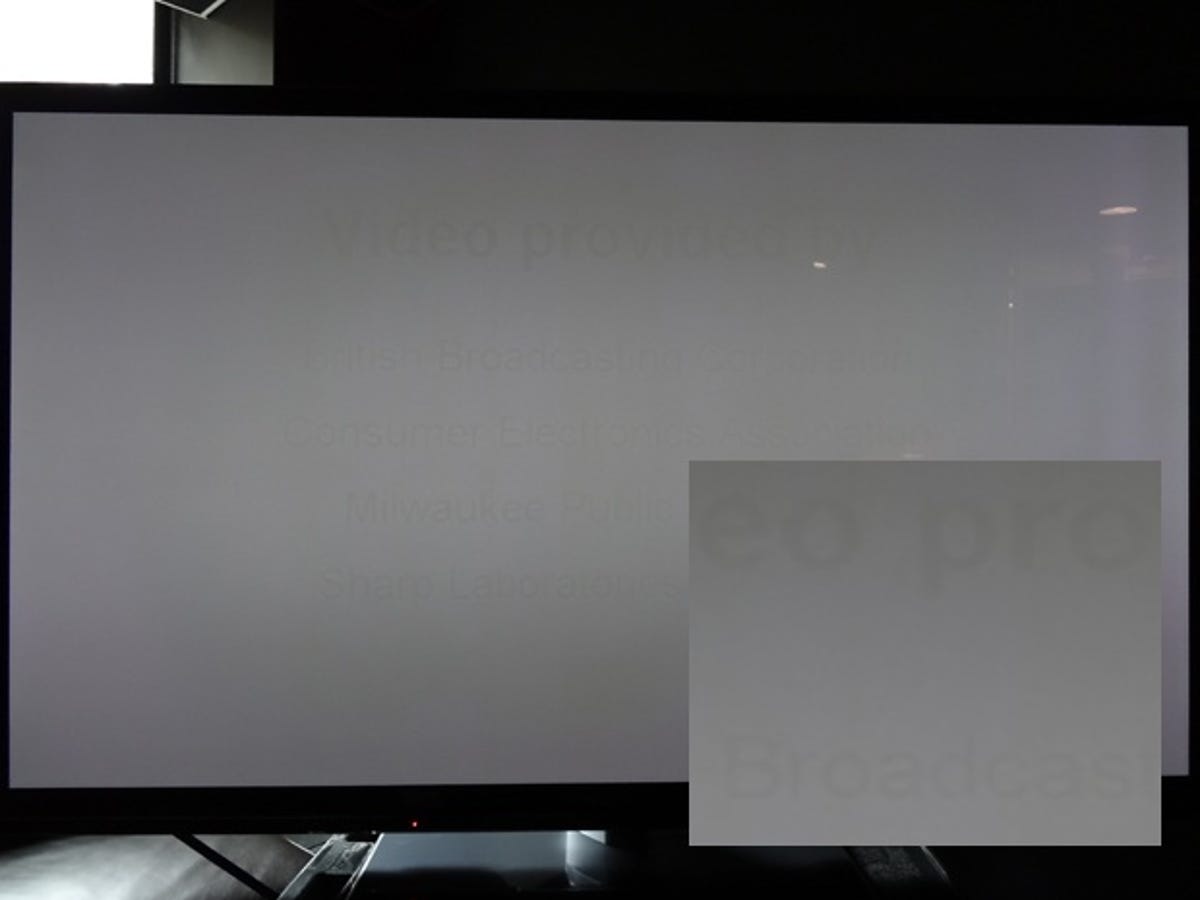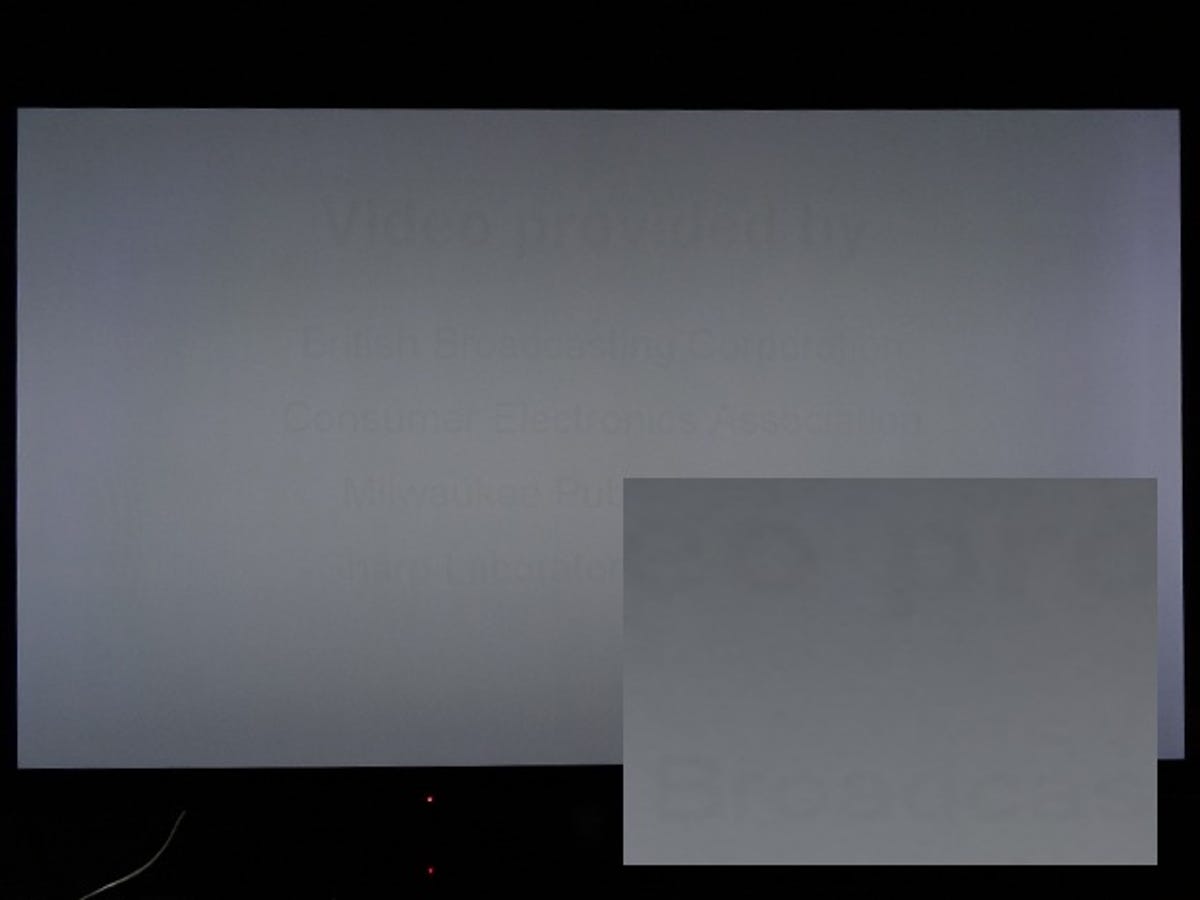

Now playing:
Watch this:
The excellent Samsung E6500 series
1:37
It’s 2012, and while many thought plasma TV technology would have died out by now, it’s still going strong. Meanwhile, burn-in, the No. 1 perceived problem with the technology, is all gone, right? Well, not exactly.
What is burn-in?
While it’s possible to test for many aspects of a TV’s performance here at CNET, one thing we have never been able to test for is burn-in. The reason? Any meaningful test of burn-in could potentially harm the television, and we currently we don’t have the budget to go around intentionally destroying review samples.
Burn-in, also known as image retention, is the effect in which a residual image is still visible as a more-or-less faint, ghostly background behind whatever you watch. It typically appears when the entire picture or elements thereof are left unmoving onscreen for hours at a time. Plasma TV makers have implemented technology such as pixel orbiters in order to stop contrasting, static images from burning into your screen. As we found out inadvertently, one maker’s technology seems to work better than another.
The setup
As part of our normal plasma TV test procedure, we loop an industry-standard DVD to simulate normal viewing conditions for 100 hours or more before we calibrate. I set up that loop one afternoon recently after receiving three manufacturer-supplied review samples, a Samsung PN60E6500, a Panasonic TC-P55GT50, and a Panasonic TC-P65VT50, and left for the night. I came back the next morning to find the TVs stuck on the DVD’s static title screen, which had been displaying on all three TVs for about 8 hours. Don’t try this at home, folks!
While this was an (unhappy) accident, it did tell us something about the state of anti-burn-in technology in 2012, and may even affect your buying decision. As a “test” it’s valid enough: each plasma was brand-new as far as we know (the manufacturers could have surreptitiously aged them before sending them to us, but we doubt it), each was set to the default “Movie” or “THX Cinema” mode with no other changes made to the default settings, and each ran for the same amount of time with the same material. The question is: which TV fared best?
In one case the screen looked no different than it had before I turned the lights off the night before. Two, however, had the image of the menu emblazoned across everything they displayed.

Josh Goldman/CNET


Josh Goldman/CNET


Josh Goldman/CNET
The winner? The Samsung PNE6500, with virtually no image retention at all. Meanwhile both Panasonics were looking much worse for wear.
But this isn’t where things ended. While we were able to then calibrate and test the Samsung just fine, we weren’t going to leave things as they were with the Panasonic TVs.
The cure
The advice offered most often to sufferers of burn-in is to “watch 24 hours of static,” but as no one uses analog tuners anymore, this is hardly helpful. In truth, running any full-screen image works just as well. We used the same “burn-in” disk as before and left it running over the long Memorial Day weekend.
As a result of four days’ continuous running — equivalent to almost a month’s normal viewing — the retained image on the VT50 basically vanished. The residual image on the GT50, while much fainter than it appeared at first, was still discernible, so we ran the disk for another couple of nights.
Disaster struck again, this time after my colleague David Katzmaier had set up the overnight loop. It stopped on the same title screen, imprinting the same static image even further. We gave up and asked Panasonic for a second GT50 review sample, and expect it to arrive this week.
At this point you may be wondering whether any amount of exercise with a moving image could serve to cure the GT50’s image retention, or whether it actually was permanent. I just don’t know, and there’s no way to tell without running it for another few hundred hours. My guess is that the image on the GT50 eventually would go away, but since we sent back that original review sample we won’t know for sure.
What can you do?
While our attempts to fix the problem worked on two out of the three plasmas — and could work on the GT50 with more time — if you find yourself stuck with persistent burn-in there is not much you can do beyond simply watching more TV and hoping it goes away. No manufacturer’s warranties currently cover burn-in. At least one add-on warranty service does (Best Buy’s Geek Squad Black Tie warranty protection), but it’s expensive. Adding it to the GT50 will cost an extra $200 for a two-year period.
As a preventative measure, make sure to enable screen savers on your video equipment, try to avoid having it show static images and letterbox bars for prolonged periods of time, and be especially careful during the first few hundred hours of your new plasma TV’s lifespan. That’s when its screen is most vulnerable to image retention.
Conclusion
It’s hard to draw wider conclusions about Samsung and Panasonic plasmas’ burn-in fighting characteristics from this one inadvertent test, so I’ll just stick to the three plasmas here. If you’re buying a TV and want to use it as an occasional PC monitor I would still recommend using an LCD, but gaming and occasional Web browsing on a plasma is fine. The fact that these effects faded over time should give you some reassurance that this is not a permanent issue for a modern plasma TV. If it doesn’t, by all means get an LCD.
But despite the ever-decreasing concerns about burn-in there’s one reason I will always pick a plasma over an LCD: image quality. For the money nothing can beat a plasma for deep black levels, wide viewing angles, uniformity, and motion-blur-free gaming. Until OLED TVs become affordable — and word is they may also be susceptible to burn-in — I will be choosing a plasma for use at home.




